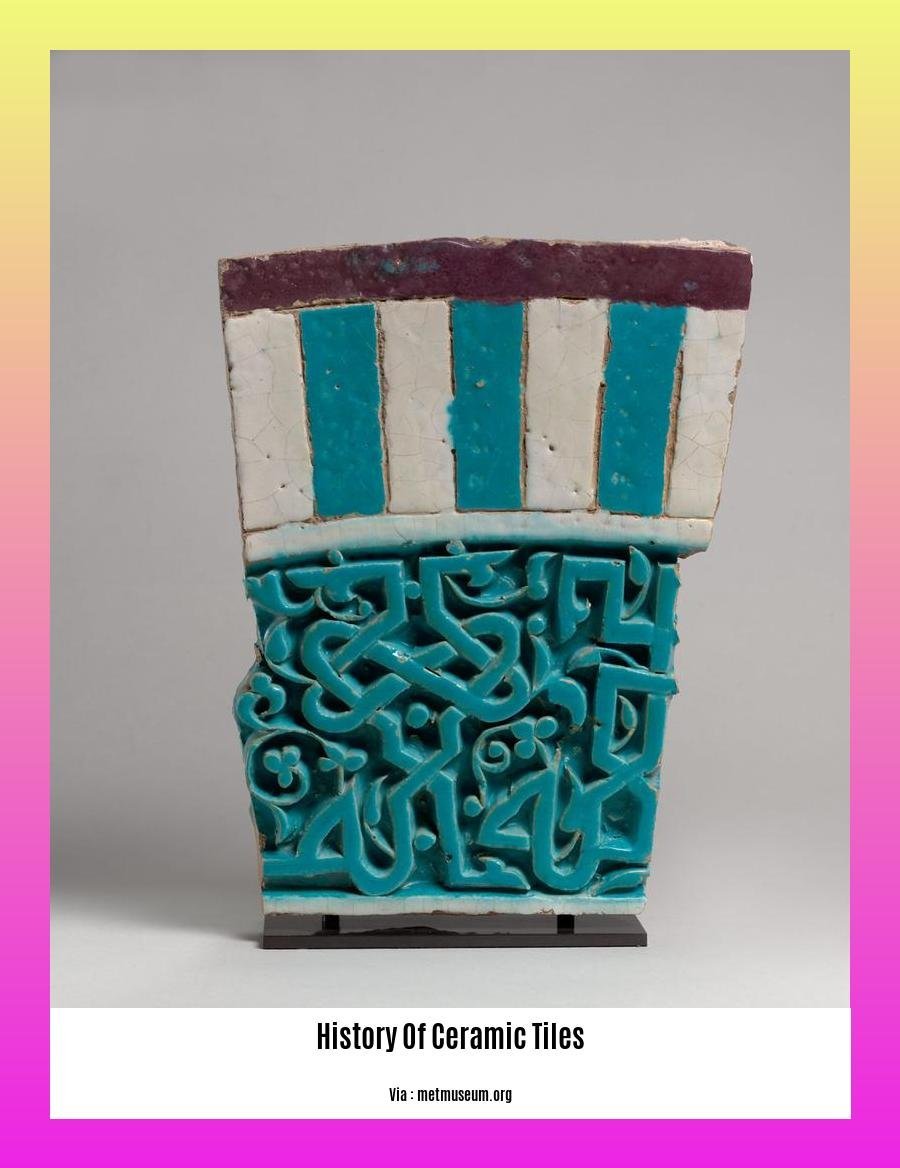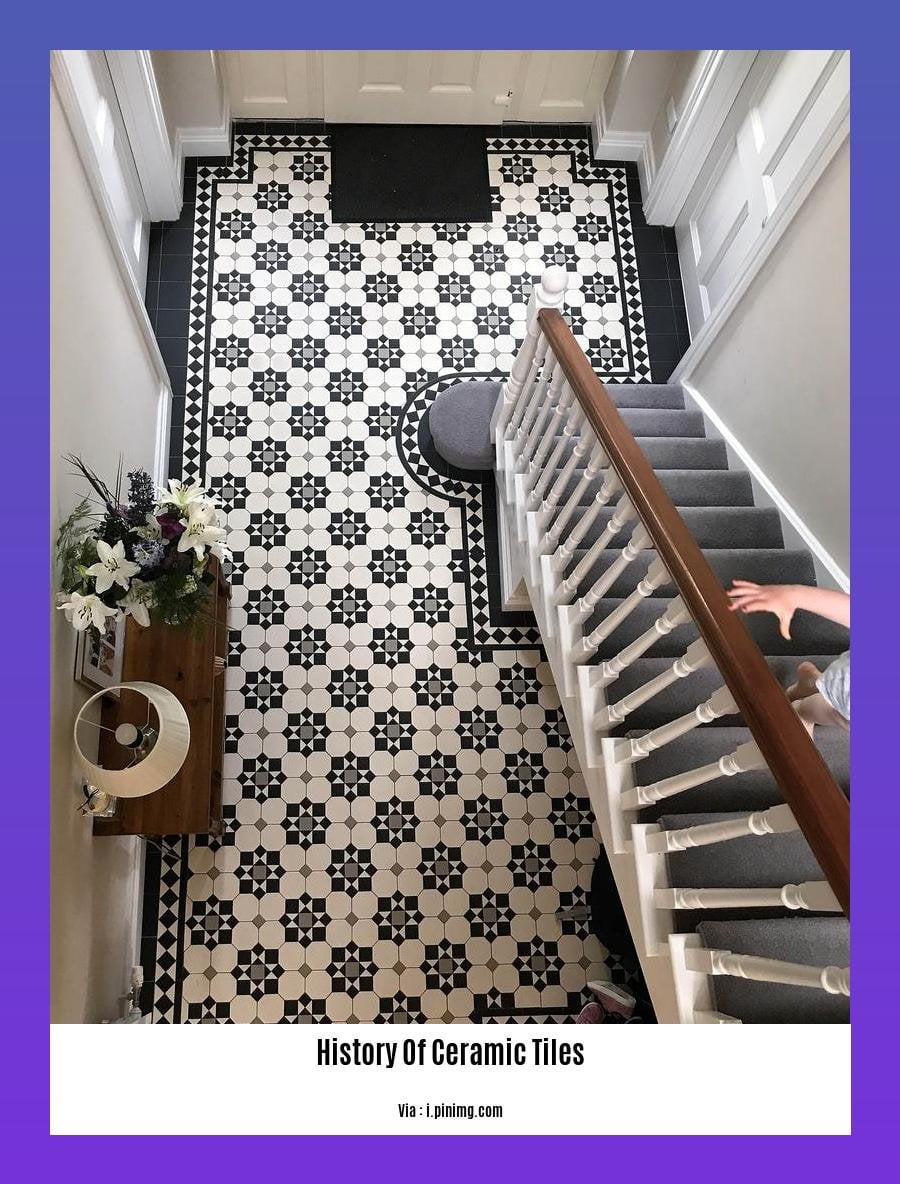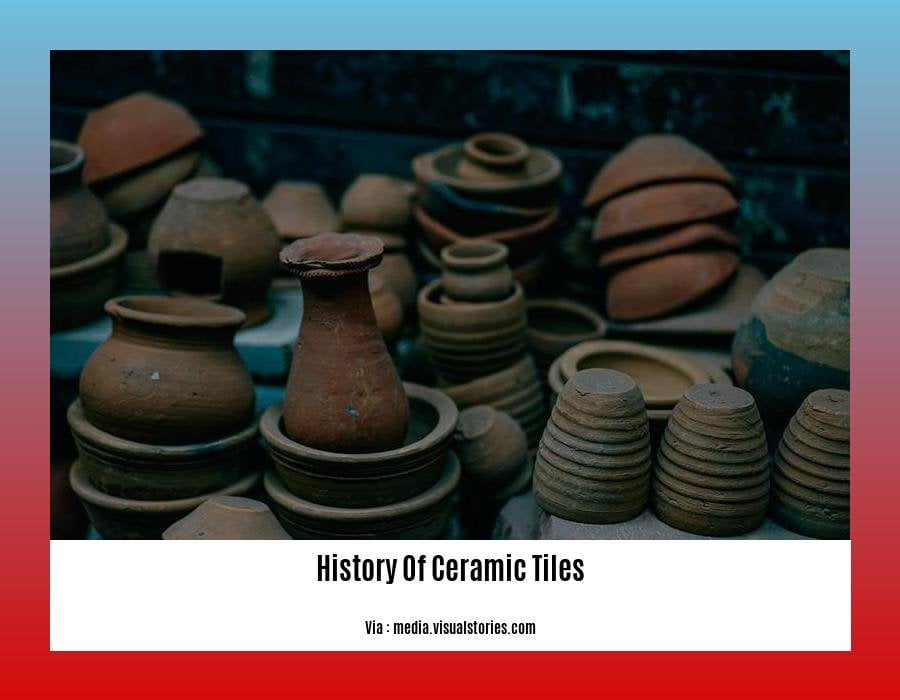Embark on a captivating journey through time as we delve into the rich history of ceramic tiles. From their humble origins in ancient Mesopotamia to their current status as a ubiquitous decorative element, these versatile creations have played a pivotal role in shaping cultures and aesthetics across the globe. From the intricate mosaics of Byzantine churches to the vibrant patterns of Islamic architecture, ceramic tiles have left an indelible mark on the built environment. Prepare to be immersed in a world of glazed artistry as we explore the evolution of ceramic tiles, tracing their journey from functional objects to exquisite works of art.
Key Takeaways:
Ceramic tiles have a rich history that dates back to ancient civilizations, with the earliest known tiles discovered in Egypt around 4000 BC.
The Romans, Greeks, Assyrians, and Babylonians also used ceramic tiles extensively.
In the Middle Ages, ceramic tiles became popular for flooring and wall decoration in Europe, while in the Renaissance, they were used to create intricate mosaics.
During the 19th century, the mass production of ceramic tiles made them more affordable and accessible to homeowners, leading to their widespread use as flooring and wall covering around the world.
History of Ceramic Tiles


In the journey of architectural embellishments, ceramic tiles have etched an enduring legacy that spans millennia, adorning floors, walls, and intricate mosaics with their vibrant colors and intricate designs.
Ancient Origins:
The odyssey of ceramic tiles traces its roots back to the ancient Egyptians, where tiles dating around 4000 BC have been unearthed, showcasing their early prowess in ceramic craftsmanship.
Throughout the antiquity, civilizations like the Romans, Greeks, Assyrians, and Babylonians embraced ceramic tiles, utilizing them for both functional and decorative pursuits.
Medieval Masterpieces:
During the Middle Ages, ceramic tiles flourished in Europe, becoming an integral part of architectural embellishments. From monasteries to castles, tiles adorned floors and walls, often depicting religious scenes or geometric patterns that reflected the prevalent artistic styles.
The Renaissance witnessed a surge in ceramic tile production, particularly in Italy, where artisans elevated tile-making into an art form. Intricate mosaics, featuring vibrant colors and detailed designs, adorned churches, palaces, and other grand structures, becoming a hallmark of the era.
Industrial Revolution and Mass Production:
The advent of the 19th century ushered in an era of industrialization, transforming the landscape of ceramic tile production. Mass production techniques made tiles more affordable, accessible to the masses, and integrated them into homes worldwide.
From humble cottages to grand mansions, ceramic tiles became a versatile and indispensable design element, offering durability, aesthetic appeal, and a wide range of design possibilities.
Contemporary Expressions:
In the contemporary era, ceramic tiles continue to evolve, reflecting diverse cultural influences and artistic expressions.
From rustic hand-painted tiles to sleek, modern designs, tiles cater to every taste and style, transforming spaces with their enduring charm.
Conclusion:
The history of ceramic tiles is a testament to human ingenuity and creativity, showcasing how this versatile material has transcended time and cultures to become an integral part of our architectural heritage.
From ancient palaces to modern homes, ceramic tiles continue to captivate with their beauty, functionality, and ability to transform ordinary spaces into extraordinary havens.
Uncover the rich legacy of Christian music by delving into history of christian music, tracing its evolution from humble beginnings to its global influence today.
Explore the fascinating history of christmas baubles, from their humble origins to the elaborate ornaments that adorn homes around the world during the festive season.
Who Invented Ceramic Tiles?
In the realm of art history and cultural anthropology, ceramics have captivated hearts for millennia. Ceramic tiles, in particular, stand as a testament to human ingenuity and artistry, boasting a rich tapestry of history. But who crafted these mesmerizing tiles? Join us on an exploratory journey to uncover the origins of ceramic tiles!
Key Takeaways:
Origins in Mesopotamia: The earliest ceramic tiles emerged in Mesopotamia, dating back to the 4th millennium BC. These tiles served practical purposes, adorning the walls of temples and palaces.
Evolution in Egypt: The Egyptians expanded the use of ceramic tiles, employing them for both functional and decorative purposes. Their tiles showcased vibrant colors and intricate designs, reflecting a mastery of glazing techniques.
Roman Refinement: The Romans elevated tile craftsmanship, creating mosaic masterpieces that graced villas, bathhouses, and public spaces. Their artistry and technical prowess continue to inspire contemporary tile designs.
Medieval Mastery: In medieval Europe, ceramic tiles flourished as flooring and wall coverings, adding color and character to churches, castles, and homes. This period marked the rise of encaustic tiles, featuring inlaid patterns and vibrant hues.
Renaissance Resurgence: The Renaissance witnessed a revival of ceramic tile art, particularly in Italy. Artisans crafted exquisite majolica tiles, adorned with hand-painted designs and metallic luster. These tiles became a symbol of opulence and refinement.
Industrial Revolution: The 19th century ushered in mass production techniques, making ceramic tiles more accessible and affordable. This revolutionized the tile industry, leading to the widespread use of tiles in homes, businesses, and public spaces.
Conclusion
Ceramic tiles, with their enduring appeal and diverse applications, have left an indelible mark on the history of art and architecture. We can marvel at their evolution, from humble beginnings in Mesopotamia to the sophisticated artistry of the Renaissance and beyond. These tiles stand as a testament to the creativity and ingenuity of our ancestors, inspiring contemporary artisans to push the boundaries of ceramic art.
FAQ
Q1: When did the earliest known ceramic tiles emerge?
A1: The earliest known ceramic tiles date back to around 4000 BC and were discovered in Egypt.
Q2: Which ancient civilizations also used ceramic tiles?
A2: Aside from the Egyptians, the Romans, Greeks, Assyrians, and Babylonians also made use of ceramic tiles.
Q3: What was the primary use of ceramic tiles in the Middle Ages?
A3: During the Middle Ages, ceramic tiles were commonly employed in Europe for the practical purposes of flooring and wall decoration.
Q4: When did ceramic tiles become widely accessible to homeowners?
A4: Ceramic tiles became more affordable and accessible in the 19th century due to the advent of mass production techniques.
Q5: What is the current status of ceramic tiles?
A5: Today, ceramic tiles remain one of the most popular types of flooring and wall covering options used worldwide.
















